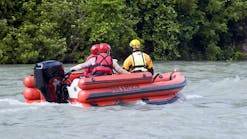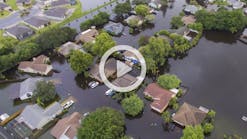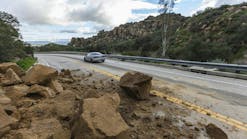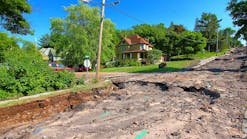New York governor announces extreme weather resiliency plan
New York Governor Kathy Hochul announced a new resiliency plan to better protect communities and infrastructure from flooding and other extreme weather conditions.
The plan outlines multiple initiatives to enhance communities’ resilience and adapt to the impacts of climate change.
“In the past year alone, New York has become all too familiar with frequent, extreme weather events,” said Hochul. “As we continue to aggressively reduce greenhouse gas emissions across New York, we simultaneously need to make sure our communities, homes and infrastructure are resilient and can withstand these coming storms. The safety of New Yorkers is my top priority, and these essential actions will protect our State for generations to come.”
Enhancing buildings’ flood mitigation
The plan proposes a series of policies to protect New York homes and businesses from future flooding, including:
- Creating the Resilient & Ready Program to create a flexible fund to support resiliency efforts for low-and-moderate income homeowners ahead of future storms. The program will enable Homes and Community Renewal (HCR) to assist households that experience flood damage to make necessary repairs in the aftermath of storms and will cover the cost of proactive flood mitigation improvements.
- Creating the Blue Buffers Voluntary Buyout Program to encourage buyouts in communities most vulnerable to flooding. The program will prioritize outreach and education first and then begin identifying voluntary projects based on the level of flood risk.
- Directing the Codes Counsel to overhaul the building codes design to adopt the International Building Code’s 2024 update, which includes higher standards for resistance to wind, snow and temperature extremes.
Enhancing extreme weather resilience
Other proposed actions to mitigate the effects of extreme weather include:
- Make investments in statewide disaster response to improve training and preparedness, and address evolving threats as they come.
- Direct the Division of Homeland Security and Emergency Services (DHSES) to supply local and county partners with additional generators, high-flow pumps and flood barrier technology. New York will fund and deploy flood barrier technology, generators, pumps, and ancillary equipment for counties to use and maintain.
- Develop a comprehensive adaptation and resiliency plan to ensure state entities and localities can equitably adapt to climate change, including assessing impacts on disadvantaged communities, ecosystems, infrastructure, and vulnerable economic sectors.
- Give the public tools to understand and act on climate risk, including web-based drought prediction tools, urban heat island mapping and modeling resources, a projected floodplain mapping tool, and an update of the state’s stormwater design manual to account for increased storm intensity associated with climate change.
- Release the Climate Projections from the New York State Climate Impacts Assessment, the latest scientific investigation into how climate change is affecting New York’s communities, ecosystems, infrastructure, and industries.
- Update Coastal Erosion Hazard Area (CEHA) Maps, which are essential to the protection of beaches, dunes, and bluffs that maintain and enhance flood resilience, so that communities and permit applicants quick quickly determine if a property is within a CEHA.
- Prepare for and prevent flooding in the Mohawk and Oswego River Basins by creating numerical watershed modeling. The modeling will inform planning and emergency forecasting to be assessed and utilized by all state agencies.
Enhance infrastructure resilience
To ensure New York’s infrastructure is prepared for extreme weather, the plan also proposes to:
- Repair aging flood control projects and remove hazard dams. Flood control projects, including 95 miles of walls and levees, will undergo rehabilitation, removal or repairs. Hochul plans to also direct DEC to establish a grant program to reduce flood risks and restore environmental connections through the removal, rehabilitation, improvement and modernization of municipal and state-owned dams.
- Launch a supercharged Green Resiliency Grant Program to build green infrastructure across the state – including green roofs and permeable pavement.
- Make state agencies more sustainable and climate resilient by investing funds to directly support state facilities and provide the resources to initiate procurement practices that prioritize sustainable and climate-resilient design practices.
- Prioritize investing in our natural waterways and streams by creating the Resilient Watersheds Implementation Grant Program. To launch the new grant program, the state will fund priority flood mitigation projects in Westchester County. Governor Hochul will also direct DEC to advance 40 state-of-the-art flood resilience studies in flood-prone watersheds.
- Expand Climate Smart Communities Program by increasing the maximum grant award that may be received by struggling localities.
- Update the regulatory scoring method for funding water infrastructure to prioritize asset management and resilience to climate change.






